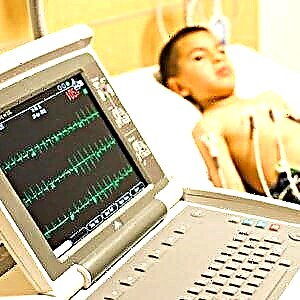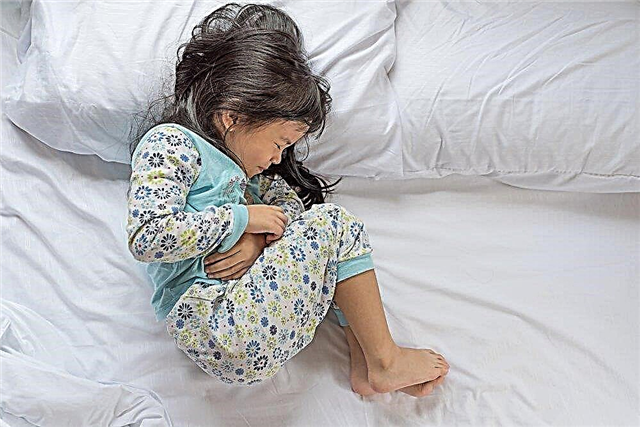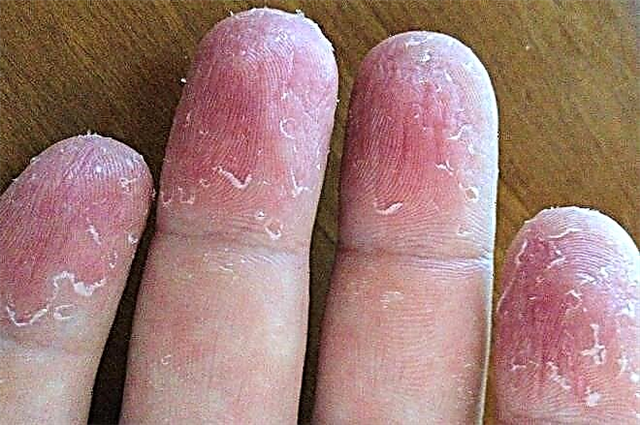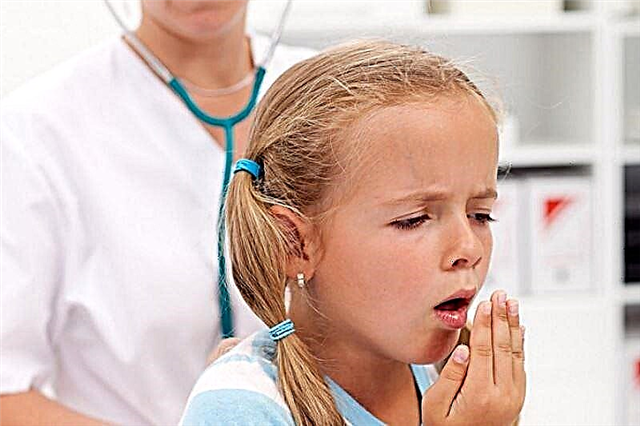The child's body has a number of features. This also applies to the cardiac system. Immaturity of the nervous system, emotional instability sometimes lead to a failure of the heart rhythm. Arrhythmia in a child is a violation of the rhythm of the heart, both in diseases of the conducting system, and physiological. Let's look at the concept of "sinus arrhythmia in children", what are its causes and treatment.
What is heart rate?
Heart - one of the main organs and, in fact, the only one that can create electrical impulses. Their main source is the sinus node. It is a collection of nerve cells that are localized in the right atrium.
The impulses originate in the sinus node in a number corresponding to the age norm of each child, and then along the pathways go down to all parts of the heart, where they cause contraction - sinus rhythm.
The conductive system is like the wires of a power plant, where the main source of "energy" is the sinus node.
A correct rhythm is a rhythm with equal intervals of time between heart beats.
Age norms of heart rate
| Newborn | 140-150 beats per minute (bpm) |
| 1 month - 1 year | 120-130 |
| 1-3 years | 110-120 |
| 3-8 years old | About 100 |
| 8-10 years old | 90 |
| 10-12 years old | 80 |
| Teenagers | 60-80 beats per minute |
Violation of the heart rhythm in children and its types:
 sinus tachycardia - cardiopalmus;
sinus tachycardia - cardiopalmus;- sinus bradycardia - decrease in heart rate;
- extrasystole - extraordinary contraction of the heart;
- respiratory arrhythmia.
Children's arrhythmia occurs in two varieties:
- Moderate sinus arrhythmia in a child. It occurs in adolescents, children under 5 years of age.
- Severe sinus arrhythmia in a child. It is rare, mainly in children due to previous rheumatism. Severe arrhythmias can occur in athletes.
Causes of sinus arrhythmia in a child:
- pathology of the nervous system - intracranial hypertension, postpartum asphyxia in a child;
- growth peaks in children 5-6 years old, 9-10 years old. At this moment, there is a sharp jump in growth, as well as in the mass of the myocardium, as a result of which the vessels of the heart and the conducting system do not keep pace with the increase in the heart muscle;
- obesity;
- rickets;
- hereditary predisposition;
- inflammatory changes in the membranes of the heart;
- infectious diseases with impaired water and electrolyte balance;
- lack of trace elements potassium, magnesium, calcium;
- congenital heart defects.
Ectopic atrial rhythm - what is it?
You can find such a phrase on the ECG description. We found out that the main pacemaker is the sinus node. But it so happens that it loses its dominant role, and ectopic foci of activity appear in the other atrium.
Causes:
 inflammatory changes in the sinus node;
inflammatory changes in the sinus node;- lack of oxygen in the myocardial area in the projection of the main pacemaker;
- diabetes;
- hormonal disorders, especially in adolescents;
- vegetative vascular dystonia;
- smoking, drug addiction.
This standing can be transient, especially in adolescents. It is necessary to conduct an ultrasound of the heart to exclude cardiac pathology and ECG. You also need to refer the child to an endocrinologist.
Personal experience!A 12-year-old child, at the clinical examination, changes in the ECG were found - ectopic right atrial rhythm with a heart rate (HR) of 60 - 88 per minute. The boy did not show any clinical symptoms. The child is engaged in wrestling throughout the year. When prescribing sedatives and limiting physical activity, ECG monitoring after 3 months revealed a normal rhythm with a frequency of 75 beats per minute.
Arrhythmia in a newborn
After birth, the baby may experience moderate arrhythmia, but often these are disorders that began in intrauterine life.
More often occurs in premature and immature babies.
Arrhythmia in newborns is in several varieties:
1. Bradycardia - less than 100 beats per minute.
 Bradycardia can occur as a result of congenital malformations, inflammatory diseases of the membranes, with congenital arrhythmias, hereditary heart disease, as well as as a result of an infectious process.
Bradycardia can occur as a result of congenital malformations, inflammatory diseases of the membranes, with congenital arrhythmias, hereditary heart disease, as well as as a result of an infectious process.
Mom can celebrate with the crumbs:
- fatigue when sucking, shortness of breath;
- pallor of the skin;
- frequent awakenings, poor sleep.
2. Tachycardia - more than 200 heart beats per minute.
Normally, arrhythmias do not occur in a newborn. It is imperative to conduct an ultrasound of the heart to exclude pathological changes.
Respiratory arrhythmia in children
It is one of the variants of arrhythmia, which is normal. Such arrhythmia is associated with the phases of breathing - the deeper the inhalation, the less frequent the pulse. Does not threaten the life and health of children. Respiratory sinus arrhythmia occurs in perfectly healthy children. Most often observed with vegetative dystonia. With this feature of the body, the child does not make any complaints.
The main type of diagnostics is ECG, where this type of arrhythmia is an accidental finding. Usually, no treatment is required.
Komarovsky E.O .: “This type of arrhythmia is not a diagnosis. It occurs very often, especially among preschoolers when listening to heart sounds. There is no reason to panic. The child lives a normal life and can attend all sporting events. "
Sinus bradyarrhythmia in children
Bradyarrhythmia - this is a decrease in heart rate, that is, the heart rate is less than the lower limit of the age norm. In this case, the time intervals between the pulses are different. As a rule, a pediatrician at the reception can listen to bradyarrhythmia.

There are several reasons for this condition:
- Very often, such a rhythm disturbance occurs in children with chronic foci of infection (for example, in the presence of chronic tonsillitis).
- After the transferred infection - ARVI, tonsillitis, scarlet fever.
- Vegetovascular dystonia.
- Inflammatory lesions of the heart in children.
- In sports children, physical activity increases the blood flow to the heart, and in order to “pump” more blood volume, there is a moderate decrease in the rhythm.
Clinical case! At an appointment with a pediatric cardiologist, you can very often meet 5-year-old children who have changes in the ECG in the form of a decrease in rhythm. The conducting system simply does not keep pace with the rapidly growing heart muscle. With the appointment of cardiotrophic therapy and with dynamic observation after 6 months, the ECG, as a rule, returns to normal.
Common symptoms of sinus arrhythmia in children:
- increased fatigue;
- intolerance to stuffy rooms;
- pallor of the skin;
- a feeling of interruptions in the work of the heart, then slowing down, then increasing. This is more common in older children;
- poor appetite, anxiety in children under one year old;
- headaches, dizziness, which are especially pronounced in the morning.
Diagnostics
The most important method for diagnosing arrhythmia is ECG, which gives reliable information about the type of arrhythmia.
 More detailed information can be provided by daily monitoring of the heart rate in case of suspicion of severe arrhythmia, tachycardia or extrasystole.
More detailed information can be provided by daily monitoring of the heart rate in case of suspicion of severe arrhythmia, tachycardia or extrasystole.
Additional methods:
- general clinical analysis of blood, urine;
- thyroid hormones;
- biochemical blood test (blood sugar, total cholesterol, antistreptolysin);
- Ultrasound of the kidneys, adrenal glands;
- Ultrasound of the heart;
- throat swab for flora.
Children's arrhythmia and methods of its treatment
Arrhythmia should be treated with non-drug methods:
- Normalization of the daily routine. It is necessary to ensure a comfortable stay of the baby in the family, to exclude conflicts. Children must sleep 8 hours a day.
- Reduce the time spent at the monitor, TV, telephone.
- Outdoor walks up to 2 hours a day.
- Physical activity.
- Balanced diet. It is necessary to actively include vegetables, fruits, dairy products, fish, cottage cheese in the diet. All these products are enriched with calcium, potassium, magnesium.
Drug treatment
There are no drugs for treating sinus arrhythmias. It is necessary to correct the underlying disease that causes this problem. Antiarrhythmic drugs for non-sinus heart rhythm disturbances should be selected strictly by a cardiologist after daily monitoring of the heart rate.
- Nootropic drugs (Piracetam, Phezam, Cinnarizin). Improves blood circulation.
- Preparations of magnesium, potassium, calcium - Magnelis, Asparkam, Calcemin.
- Sedatives (Glycine, Phenibut, motherwort, valerian). They have a calming effect.
- Homeopathic remedies (tincture of ginseng, eleutherococcus).
Sinus arrhythmia of the heart is the line between norm and pathology. A kind of "bell" that speaks of a problem in the body. Therefore, no special drug therapy is required.
Dispensary observation by a cardiologist is mandatory, an ECG is performed twice a year. We hope that in our article you have found the answer to the question of what is sinus arrhythmia.
Article rating:

 sinus tachycardia - cardiopalmus;
sinus tachycardia - cardiopalmus; inflammatory changes in the sinus node;
inflammatory changes in the sinus node;

